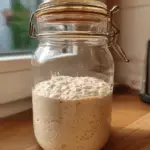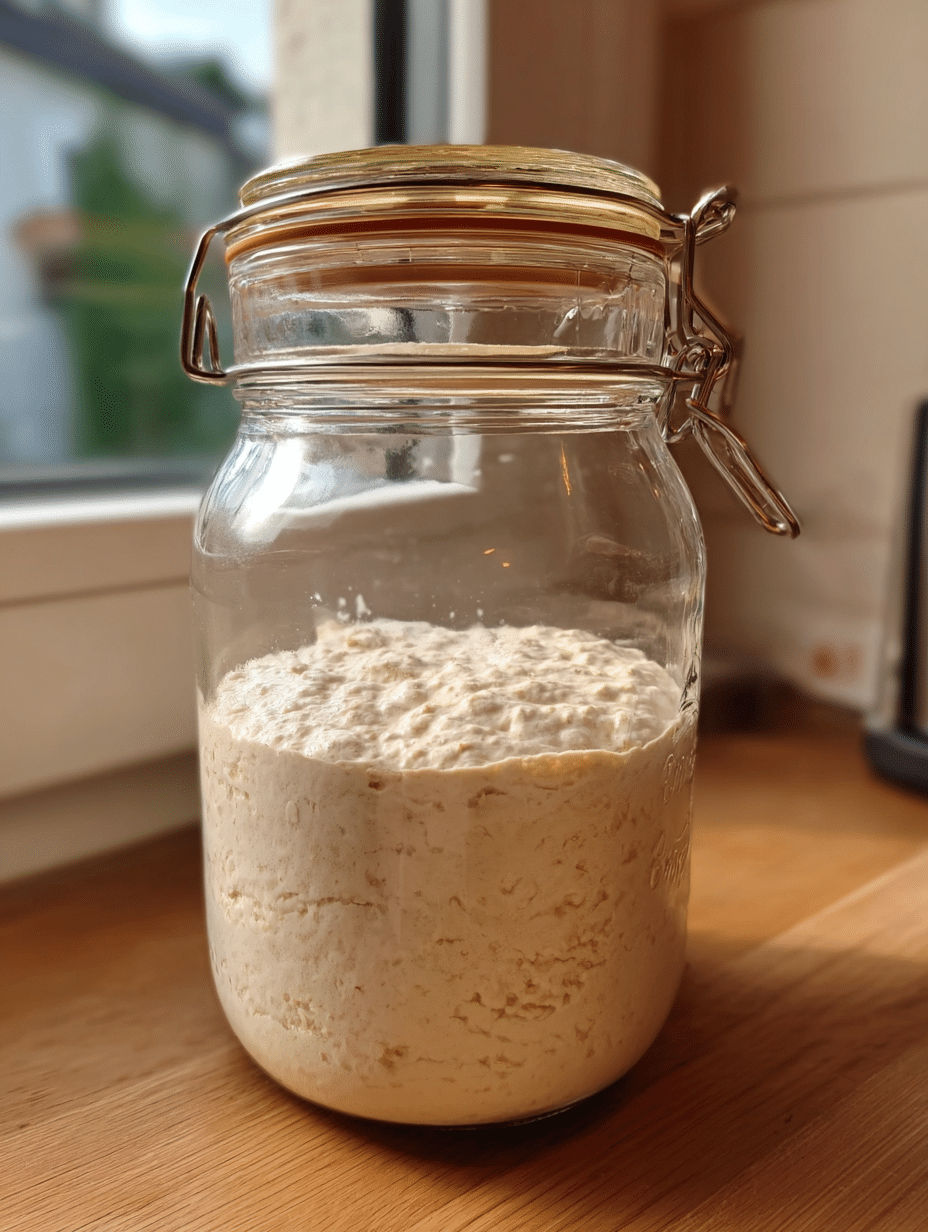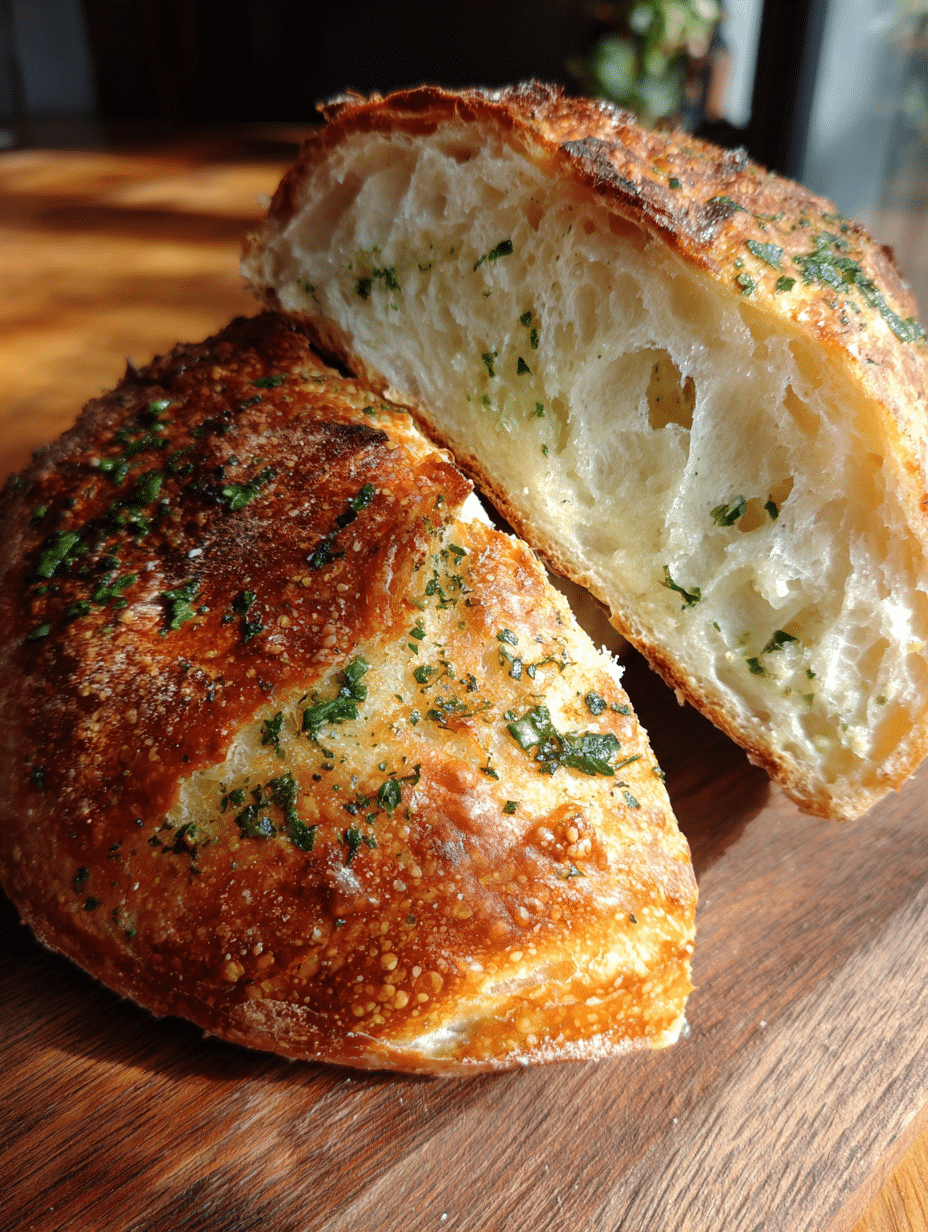The Story & Intro
How a Tiny Jar Changed My Sourdough Game
If you’d stepped into my kitchen a few years ago, you’d probably have seen flour everywhere, jars labeled with dates, and a compost bin full of discard. I loved the idea of sourdough the fermentation, the tang, the living dough but the upkeep? It started to feel like a second job. Feeding every day, tossing perfectly good flour, and tracking rise times like a hawk was exhausting. That dreamy loaf of sourdough began to carry a weight of guilt and waste I hadn’t expected.
Table of Contents

No Discard Sourdough Starter
- Total Time: 5
- Yield: 1 starter feeding 1x
- Diet: Vegan
Description
A no discard sourdough starter method using a 1:4:4 ratio that eliminates waste while keeping your starter fridge-friendly and ready to bake anytime.
Ingredients
10g sourdough starter
40g water (room temperature)
40g flour (AP, whole wheat, or rye)
Instructions
1. Remove 10g of starter from fridge.
2. Feed it with 40g water and 40g flour (1:4:4 ratio).
3. Mix well and let sit at room temperature 8–12 hours.
4. When bubbly and doubled, use in your recipe.
5. Refresh remaining starter with a small feeding (1:1:1).
6. Let sit 30 minutes and return to fridge.
Notes
You can scale this method depending on how much starter you need.
Whole wheat or rye speeds up fermentation.
Mark the jar with a rubber band to track rise.
- Prep Time: 5
- Category: Sourdough
- Method: Fermentation
- Cuisine: American
Nutrition
- Serving Size: 1 tablespoon
- Calories: 45
- Sugar: 0g
- Sodium: 0mg
- Fat: 0g
- Saturated Fat: 0g
- Unsaturated Fat: 0g
- Trans Fat: 0g
- Carbohydrates: 10g
- Fiber: 1g
- Protein: 1g
- Cholesterol: 0mg
Keywords: no discard sourdough starter, 1:4:4 sourdough method, fridge sourdough starter, zero waste starter, sourdough routine
Then came the shift: I discovered a no discard sourdough starter method that was not only sustainable, but surprisingly low effort. Just a tiny spoonful of starter, tucked in the fridge, ready when I was. No more waste, no more rigid feeding schedules. It reminded me why I fell in love with baking in the first place the magic of simple ingredients rising into something wonderful.
Since switching, I’ve baked everything from sourdough discard crumpets to chewy garlic herb sourdough bread, all without tossing out starter each week. The peace of mind that comes from a minimal, fridge-happy starter setup? Game changer.
The Turning Point: Discovering No-Discard Simplicity
The moment I realized I didn’t have to maintain a bubbly, active starter on the counter 24/7 was liberating. I began feeding just a few grams when I needed to bake, using a 1:4:4 ratio 10 grams of starter, 40 grams each of water and flour. By the next morning, it was active and strong, ready for a bake.
This simple process made my baking more joyful and less wasteful. I now use the same little jar week after week, pulling it out only when it’s time for my go-to sourdough bread loaf or sourdough discard pizza dough. It’s easy, efficient, and beginner-friendly everything sourdough should be.
Stay with me in the next section, I’ll show you how this system actually works and how you can try it with just a spoonful of starter.

How the No Discard Sourdough Starter Works
The 1:4:4 Feeding Ratio Explained
The beauty of the no discard sourdough starter method is its elegant simplicity. Instead of juggling multiple jars and wasting flour week after week, you use just a spoonful of starter and give it a generous meal. The 1:4:4 ratio 10 grams of starter, 40 grams of flour, and 40 grams of water gives your microbes all they need to thrive, with no discard required.
This higher ratio offers several benefits:
- Your starter stays strong and well-fed for baking.
- It ripens overnight without peaking too fast.
- No extra starter to toss ever.
After mixing, mark your jar with a rubber band to track its rise. At room temperature, it should double or triple in 8 to 12 hours. This method is versatile, too. Swap in rye or whole wheat for faster fermentation, or stick with all-purpose for a classic, mellow flavor. It’s a perfect fit for small-batch bakers and especially ideal if you’re making something like these soft sourdough discard cinnamon roll bites that don’t require a huge amount of starter.
How to Activate from the Fridge Without Waste
Here’s the best part: your starter can live in the fridge most of the time. When you’re ready to bake, just pull it out the night before, feed it once, and let it rise. No daily upkeep. No tossing excess. This approach makes sourdough fit real life not the other way around.
For example, if you want to bake cheesy sourdough breadsticks that call for about 90–100 grams of active starter, a single 1:4:4 feeding will get you there. After you scoop what you need, refresh the leftovers with a quick 1:1:1 feed, let it sit 30 minutes, and refrigerate. It’ll be ready for your next baking day, whether that’s in a week or longer.
This low-effort rhythm pairs beautifully with flexible recipes like sourdough discard graham crackers or a cozy weekend sourdough loaf. It keeps your baking fun, not fussy.
Benefits of the No Discard Sourdough Starter Method
Zero Guilt, Zero Waste: Why It’s Beginner-Friendly
One of the biggest frustrations new bakers face with sourdough is the sheer amount of discard. It feels wasteful and unsustainable, especially when flour prices climb or you’re baking infrequently. That’s why the no discard sourdough starter method feels like a breath of fresh air you only feed what you need, and nothing goes to waste.
Since you’re working with tiny amounts, you won’t end up tossing cup after cup of flour. This is especially comforting when you’re still learning. No pressure, no big loss if things don’t rise perfectly. You’re baking small, learning fast, and saving ingredients. It makes starting sourdough from scratch or restarting after a break way less intimidating.
Even better, this method naturally supports small-batch baking. Whether you’re making a loaf of garlic herb sourdough bread or experimenting with sourdough starter with potato flakes, you don’t need a mountain of starter on hand. Just feed when needed and bake what you love.
How It Supports a Low-Maintenance Baking Routine
The no-discard routine isn’t just great for the planet it’s great for your schedule. You’re no longer tied to daily feedings or anxious about your starter dying if left alone. This method is adaptable. Leave it in the fridge for a week, then revive it with a single feed. No panic, no guilt.
Let’s say your baking time opens up on a Saturday. Pull your starter Friday night, give it a feed, and by morning it’s ready for dough. You’re not scrambling to time multiple feedings or revive a neglected culture. This hands-off approach makes it easy to slot baking into real life especially for busy parents, students, or anyone juggling a lot.
Plus, it pairs well with recipes that give back more than just bread. Use that freshly fed starter to try sourdough discard crumpets for breakfast, or save a portion to whip up quick sourdough discard pizza dough for the weekend. You’ll get multiple bakes from one low-effort feeding.
This is why so many people who thought sourdough was too fussy end up loving this method. It strips things back to what matters good bread, made simply.
Tips, Troubleshooting & Starter Strength
When to Feed Again & Signs It’s Ready to Bake
A big question with the no discard sourdough starter method is, “How do I know it’s ready?” Fortunately, your starter gives you all the signs you need you just need to observe.
After feeding your small spoonful with the 1:4:4 ratio, watch it over the next 8–12 hours. It should become bubbly, domed at the top, and nearly double in size. If you use a rubber band to mark the starting point, you’ll see its growth clearly. When it smells pleasantly tangy and not sharp or alcoholic, it’s ready.
If it hasn’t risen much or smells off, give it more time at room temperature. Cooler kitchens may take longer. Once it’s risen well and looks active, you can bake right away or store it back in the fridge with a small refresh.
If you’re making a long-ferment dough like this sourdough bread loaf, even a starter that’s not quite at peak can still perform beautifully with enough fermentation time.
Common Mistakes with No-Discard Methods (and Fixes)
Mistake #1: Not feeding enough for the bake.
Always calculate how much starter you need the night before. If your recipe calls for 120g, feed 15g starter with 60g flour and 60g water (1:4:4) for just over 130g of active starter in the morning.
Mistake #2: Feeding again before the starter has fully ripened.
Let it fully ferment before adding more flour. Overfeeding too early dilutes the microbial strength.
Mistake #3: Leaving the starter too long without refreshment.
While this method is low maintenance, your fridge-starter still needs a light feeding after baking. Otherwise, it weakens over time.
The good news? If your starter ever seems sluggish, just give it two small feedings 8–12 hours apart. Even a tired culture can bounce back fast especially with a touch of whole grain flour to spark activity.
Want something quick while your starter recovers? Try a fun project like sourdough discard cinnamon roll bites or buttery sourdough discard crumpets to stay in the groove.
Frequently Asked Questions About No Discard Sourdough Starter
Can I keep my sourdough starter in the fridge without daily feeding?
Yes, absolutely. That’s one of the key benefits of the no discard sourdough starter method. After you feed your starter and let it rise, you can store it in the fridge for up to a week or more without daily feeding. Just feed it again before your next bake.
What does 1:4:4 ratio mean in sourdough starter feeding?
The 1:4:4 ratio refers to feeding 1 part starter with 4 parts flour and 4 parts water by weight. For example, if you use 10g of starter, you’ll add 40g of water and 40g of flour. This creates a healthy environment for your microbes to thrive with no waste.
How do I bake bread with a no discard sourdough starter?
Once your starter has been fed and has doubled in size (usually within 8–12 hours), it’s ready to use. Simply take the amount you need for your recipe, and then feed the remainder with a small amount of flour and water before storing it back in the fridge. This works perfectly for recipes like sourdough discard pizza dough or even classic sourdough bread loaves.
Is a no discard starter strong enough for regular sourdough recipes?
Yes. As long as your starter is bubbly, has doubled in size, and smells pleasantly tangy, it’s strong enough for most sourdough recipes. Just ensure you give it a full feeding (like 1:4:4) before baking, and it will rise your dough beautifully even for rustic loaves or enriched treats like sourdough discard cinnamon rolls.
Join the No-Discard Movement
The no discard sourdough starter isn’t just about saving flour. It’s about reclaiming the joy of baking without the overwhelm. With a single jar in the fridge and a spoonful of starter ready to rise, sourdough becomes simple, flexible, and endlessly rewarding.
Whether you’re a new baker or just tired of the waste, this method makes sourdough approachable again. You don’t need daily rituals or discard guilt just flour, water, and curiosity.






Not yet.Would like the recipe for starting a starter.
I don’t have any starter to follow your recipe
Thanks for your comment! If you don’t have a starter yet, no worries—I recommend checking out my how to make a sourdough starter from scratch
guide. It’s simple, and once it’s active, you’ll be ready to bake this bread and more!